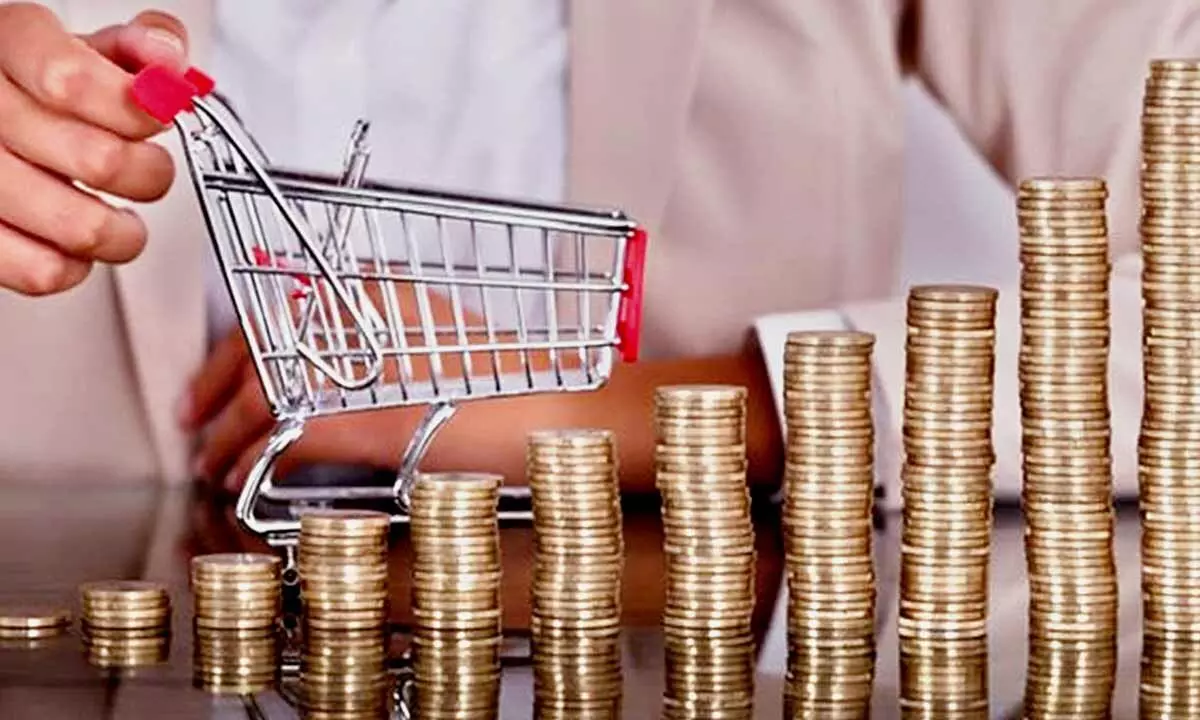Supply side CPI inflation driving 64% of headline inflation in India
CPI inflation moderated slightly to 7.01% in June as compared to 7.04% in May due to moderation in food inflation, says SBI chief economic advisor
image for illustrative purpose

Supply side CPI inflation is currently driving 64 per cent of headline inflation in India, according to Dr Soumya Kanti Ghosh, Group Chief Economic Adviser, State Bank of India.
CPI inflation moderated slightly to 7.01 per cent in June as compared to 7.04 per cent in May due to moderation in food inflation, Ghosh said.
He said the June data now confirms the fact that peak in India has passed. Interestingly, while urban inflation has eased to 6.92 per cent in June, rural inflation has however increased modestly by 1 bps in Jun 2022, with increase in weighted contribution of clothing and footwear.
Meanwhile, globally, high inflation has been a worrying factor across the world. Both demand (owing to pandemic related fiscal stimulus) as well as supply factors (supply issues causing high commodity and food prices) are being responsible for higher prices. Using the idea from the recent paper by Shapiro (FRBSF Economic Letter, June 21), we bifurcated CPI inflation into supply and demand CPI, Ghosh said.
"Our analysis shows that out of 299 commodities in headline CPI basket, 200 could be categorised as supply driven and the rest 99 as demand driven. Our results show that, supply side factors are currently responsible for almost two-third of the current elevated level of CPI inflation. This in part reflects supply constraints from continued global supply disruptions related to the pandemic and the war in Ukraine. Demand factors contribute only one-third to CPI inflation," he said.
Ghosh said in India, CPI inflation attributable to supply side factors has started moving up after September while demand led CPI remained more or less constant. The two have been moving together post February (since the starting of Russia-Ukraine conflict). However in the recent months demand led CPI inflation has moved up a bit, while supply led CPI inflation continues to moderate. Clearly, the RBI may have to raise rates further though, the clear downward trend in inflation attributable to supply side factors bodes quite well for inflation trajectory going forward.
He said core inflation has trended down from its peak in April (taking last 12-months as reference period). The moderation is on account of fall in contribution of transport and communication from 1.7 per cent in April to 1.1 per cent in June. The fall in core CPI is largely the product of fall in demand owing to lagged effect of high inflation in the past months.
Further correction in prices of precious metal around April has contributed to correction in personal care and effect. With major states such as Maharashtra which contribute 100 bps to all India CPI (95 bps in June) expected to announce cut in VAT on fuel, it is expected that core may correct further as pass through of fuel will happen in subsequent months along with correction in global prices of commodities, Ghosh said.
He said the problem however lies with central banks in developed economies that should have normalised monetary policy from mid-2021 itself and did clearly miss the bus. Central banks are in a catch-up mode. As per independent research the wide gap between the job vacancy rate and unemployment rate (currently at 3.3 per cent) in USA currently indicate a strong labour market. This will translate into higher nominal wages. This in turn might create a wage-price spiral. Hence a moderation in commodity prices would not be enough to halt rising inflation. The fear arises that spiralling inflation and an aggressive monetary policy tightening cycle may lead to the recession particularly in the US economy.
However, the fear is unfounded. Historical analysis done by Alan Blinder indicates that out of 11 episodes of high inflation/monetary tightening in US, seven of them were arguably "pretty soft," and three of them never had the intention of making the landing soft. And hence in the current situation the risk of a recession is only 20-30 per cent, instead the chance of prolonged stagflation seems more, Ghosh said.
Separately, we now expect inflation by March might end up closer to 5 per cent. However, as per our calculation, the additional impact of GST rates increase on CPI inflation will be in the range of 15-20 bps only, he said.
Even as IIP numbers printed close to 20 per cent, the bad news is that in Q1FY23, new investment announcement declined by around 27 per cent to Rs 4.35 lakh crore as compared to Rs 5.99 lakh crore in Q1FY22 and Rs 5.75 lakh crore in Q4FY22, Ghosh added.

